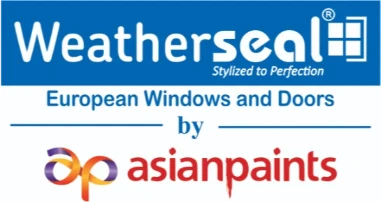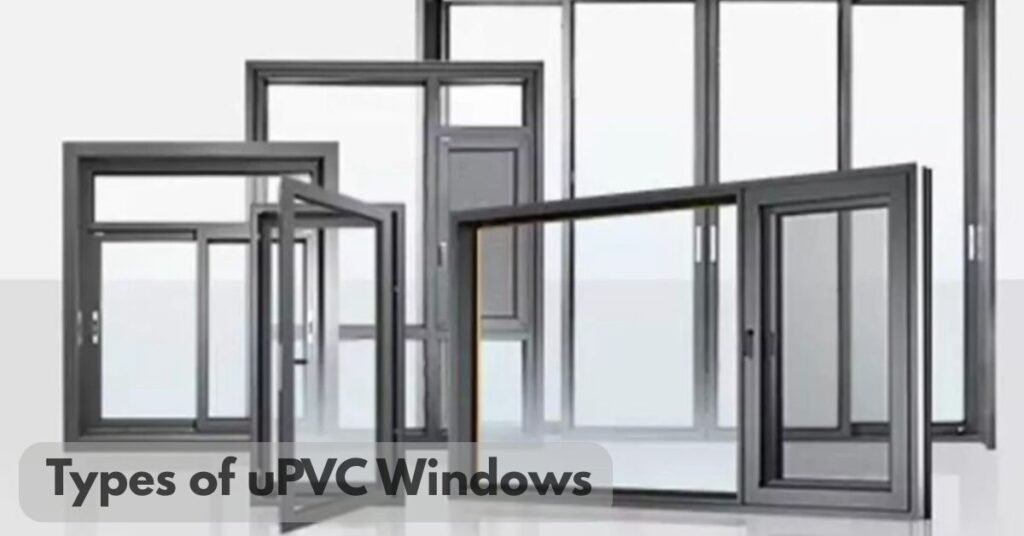Types of uPVC Windows: A Complete Guide for Homeowners
uPVC (unplasticized polyvinyl chloride) windows have become one of the most popular choices for modern homes—and for good reason. Known for their durability, energy efficiency, noise insulation, and low maintenance, these windows are ideal for both residential and commercial spaces.
But did you know that there are different types of uPVC windows, each designed to suit a unique need, style, and space? Whether you want better ventilation, maximum natural light, or an elegant aesthetic, there’s a perfect uPVC window type for you.
In this article, we’ll explore the types of uPVC windows available today, their benefits, and how to choose the right one for your home.
1. Casement Windows
Casement windows are among the most common types of uPVC windows. They are hinged on one side and open outward like a door, allowing maximum airflow and unobstructed outdoor views.
Key Benefits:
- Excellent ventilation and natural light
- Airtight seal for better insulation and energy efficiency
- Easy to operate and clean
Ideal for: Living rooms, bedrooms, and areas where you want full ventilation.
2. Sliding Windows
Sliding windows feature two or more sashes that slide horizontally on tracks. They are perfect for spaces where outward-opening windows aren’t practical.
Key Benefits:
- Space-saving design – no need for extra clearance
- Sleek, modern look with wide glass panes
- Smooth operation and minimal maintenance
Ideal for: Kitchens, balconies, and rooms with limited space.
3. Tilt and Turn Windows
Tilt-and-turn windows are versatile and highly practical. They can open in two ways: tilt inward from the top for ventilation or turn inward like a door for full opening.
Key Benefits:
- Flexible ventilation options
- Easy to clean from inside
- Excellent insulation and security
Ideal for: Bedrooms, bathrooms, and high-rise apartments.
4. Bay Windows
Bay windows project outward from the wall, creating a small “bay” inside your room. They add a touch of luxury and make the space appear larger.
Key Benefits:
- Panoramic outdoor views
- More natural light
- Adds an elegant, architectural element to your home
Ideal for: Living rooms, reading nooks, or dining areas.
5. Fixed (Picture) Windows
Fixed windows do not open and are designed to provide a clear, uninterrupted view of the outside.
Key Benefits:
- Maximum natural light
- Excellent thermal and sound insulation
- Sleek and minimalist look
Ideal for: Staircases, hallways, and areas where ventilation isn’t required.
6. French Windows
French windows consist of two casement-style panels that open outward from the center. They add elegance and a classic charm to your space.
Key Benefits:
- Great for wide openings
- Maximizes light and ventilation
- Adds a premium, sophisticated look
Ideal for: Balconies, patios, or connecting indoor and outdoor spaces.
7. Villa Windows
Villa windows are designed with style and security in mind, making them perfect for large, luxurious spaces.
Key Benefits:
- Larger frames for better ventilation and light
- Enhanced security features
- Excellent weather resistance and insulation
Ideal for: Villas, bungalows, and premium residential projects.
8. Combination Windows
Combination windows mix two or more styles (for example, fixed + casement) in a single unit to meet multiple needs.
Key Benefits:
- Flexible design options
- Customizable for unique spaces
- Combines ventilation and unobstructed views
Ideal for: Large openings where you want both fixed glass and operable windows.
How to Choose the Right uPVC Window
When selecting from the different types of uPVC windows, consider:
- Space: Sliding windows work well in smaller rooms.
- Ventilation Needs: Casement and tilt-and-turn windows are best for airflow.
- Design Goals: Bay and French windows enhance aesthetics.
- Maintenance: Fixed windows require almost no upkeep.
Frequently Asked Questions:
Q1: Which type of uPVC window is best for small rooms?
Sliding windows are ideal for small spaces since they don’t require extra clearance to open and provide good ventilation.
Q2: Are uPVC windows energy efficient?
Yes! uPVC windows form an airtight seal that helps regulate indoor temperature, reducing heating and cooling costs.
Q3: Can I combine two different types of uPVC windows?
Absolutely. Combination windows let you mix fixed panes with casement or sliding windows to achieve both style and function.
Q4: Do uPVC windows reduce outside noise?
Yes, uPVC windows are excellent for noise insulation, making them perfect for homes near busy roads.
Q5: How long do uPVC windows last?
With proper care, high-quality uPVC windows can last 20–30 years without losing their finish, color, or performance.

